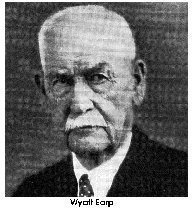Defined as a super tall building that is continuously habitable, a skyscraper is a fascinating invention. The Empire State Building in New York City
, the Willis Tower in Chicagoand the Taipei 101 in Taiwanare just some of the most impressive skyscrapers ever created. Today, these buildings serve as practical solutions to the increasing scarcity of land worldwide. Aside from these things, it is also good to know the history of these tall buildings including who invented the skyscraper.
The Invention of the Skyscraper
Who invented the skyscraper? After he created the first ever load-bearing structural frame for the Home Insurance Building within the City of Chicago in Illinois in 1885
, it is but right to credit architect William Le Baron Jenney as the Father of American skyscrapers. The ten-storey building was the very first skyscraper in the world.
In 1891, American architects Louis Sullivan and Dankmar Adler designed the Wainwright Building in Saint Louis
, Missouri. It was also a ten-storey building. However, many people considered it the first true skyscraper rather than the Home Insurance Building because it was constructed with steel frames. Furthermore, it featured vertical bands, which helped emphasized the building’s height even more.
Additional Facts and Other Interesting Information
After the early skyscrapers were created, fire restrictions and height limits were introduced. In 1895, the American Surety Building was completed in New York.
It was the tallest building during that time. In 1930, the Chrysler Building was completed in New York City.In 1931, the Empire State Building, which was comprised of 102 floors, was completed. In 1932, the Boerentoren was constructed in Antwerp, Belgium. It was made up of 26 floors. In 1940, the Torre Piacentini was completed with 31 floors within the City of Genoa in Italy.
By the 1930s, modern skyscrapers started to emerge, particularly in Asian regions like Bangkok in Thailand, Jakarta in Indonesia as well as Manila in the Philippines. The same also happened in Latin American regions like Mexico City in Mexico, Caracas in Venezuela and Sao Paulo in Brazil.
There are numerous supertall skyscrapers scheduled for completion in the near future. The list includes the Shanghai Tower in China.
Its construction started sometime in November 2008 and is scheduled to be completed by 2014. The plan includes 127 floors measuring a height of 2,073 feet or 632 meters. Aside from these, there are other buildings scheduled for completion in the next few years or so such as the 1 World Trade Center in New York City, the PAGCOR Tower in the Philippines and the Burj Dubai in the United Arab Emirates.
- 1 pound linguine
- 1 1/2 sticks butter
- 3 tablespoons olive oil
- 10 garlic cloves, minced (see Notes)
- 1 teaspoon salt
- 1/2 teaspoon black pepper
- 1 pound large shrimp, peeled and deveined, tails removed
- 2 tablespoons fresh lemon juice (about 1 lemon)
- 2 tablespoons chopped fresh parsley
- Cook linguine according to package directions; keep warm.
- Meanwhile, in a large skillet over medium heat, melt butter and heat oil until hot.
- Add garlic, salt, and pepper, and saute garlic 1 to 2 minutes. (Do not brown.) Stir in shrimp and cook 3 to 4 minutes, just until pink. Stir in lemon juice and parsley; mix well. Serve immediately over warm linguine.
And births this date include...

1955 – Bruce Willis, American actor
Every March 19th, National Certified Nurses Day celebrates the certified nurses who impact lives every day.
Certified nurses dedicate their entire careers to helping others and often work long, hard hours. The day honors and recognizes them and their significant achievements. Their advanced skills require continuing education, re-certification, and continued knowledge of ever-changing technology. Certified nurses balance clinical needs and patient care. Helping patients meet their healthcare goals in complex and challenging times makes a Certified Nurse’s commitment even more valuable.
A nursing career is as varied as a doctor’s. They specialize and can earn certifications in specialties and sub-specialties. Certified nurses study and take certification exams to demonstrate their competency, skill, and knowledge in a field. Board certification is available in a variety of fields including:
- Ambulatory Care Certification
- Clinical Nurse Specialist Certification
- Informatics Certification
- Medical-Surgical Certification
- Nurse Practitioner Specialty Certification
- Pediatric Nursing Certification
- Psychiatric Nursing Certification
Nurses can also obtain sub-specialty certifications. Certified nurses provide skilled experience in the medical fields where they work. They also improve the quality of the health care provided. Now, more than ever, health care needs more qualified nurses providing the care that we need.
HOW TO OBSERVE
Thank a certified nurse, and all they do. If you know someone who is striving to become a certified nurse, encourage them in their endeavors. Encourage certified nurses to attend job fairs to share their experiences and inspire others to become certified nurses. Consider taking a certification you’ve had your eye on. Learn more about the certification process. Speak to other certified nurses.
NATIONAL CERTIFIED NURSES DAY HISTORY
National Certified Nurses Day was established on March 19th in honor of Margretta (Gretta) Madden Styles (March 19, 1930 – November 20, 2005), MSN, Ph.D. Her pioneering and distinguished career inspired nurses around the country. She was recognized worldwide for her leadership and contributions to the study and practice of nursing.


















